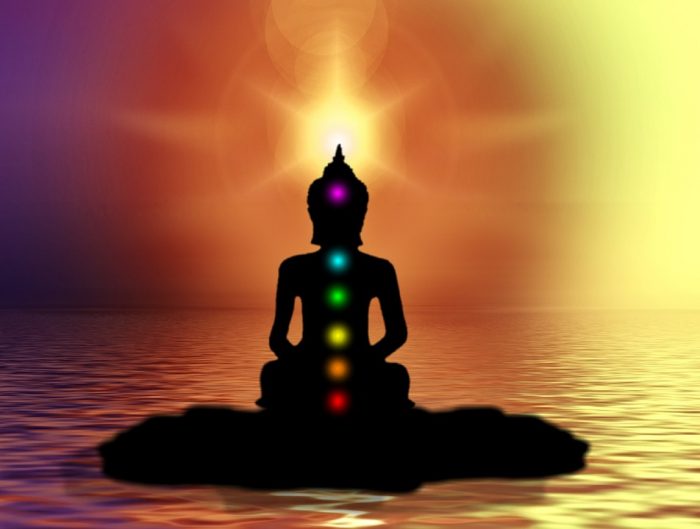On February 15, the world celebrated the “Parinirvana Day or Nirvana Day”. In the Buddhist religion, it is a very important day. The day commemorates the death of Buddha, in the worldly sense, but in the yoga and spiritual world, his death is referred to as his achievement of the Enlightenment and finally reached the stage of Nirvana or Parinirvana.
Nirvana is the state where it is believed to be the end of the cycle of death and rebirth. According to Buddha, the nirvana means the abolishing of all wants, ignorance, hatred, and suffering. This is a state of the human mind which is free from all conditions – like upbringing, physical and mental sensations, perceptions, opinions, presuppositions. The soul gets free from samsara, the karmic cycle of life and death and enters into the divine state. In Buddhism, it is known as sopadhishesa-nirvana – “Nirvana with remainder i.e. something is left over.” On his death, the day is known as Parinirvana which is referred to as “Final Nirvana.”
The Parinirvana or Final Nirvana is achieved by one who has attained nirvana during his lifetime and lived with it. Parinirvana is actually the reward of living life with nirvana – releasing from the cycle of suffering, death, and rebirth. The Nirvana can be achieved during life through the adherence to the eightfold path which consists of eight practices of living life – right view, resolve, speech, conduct, livelihood, mindfulness, and samadhi, and effort. When an individual integrates these eight practices into his/her life purposefully, it results in liberation from the cycle of death and rebirth.
What will happen if we didn’t achieve nirvana during our life?
When a person who didn’t achieve nirvana during his or her lifetime died i.e. losing his/her physical body, the impression of their unresolved karma sticks with his consciousness and comes back with him/her as he/she rebirth. And the individual can be reborn in the range of an ordinary person to the heavenly realm of divinity and varies the hierarchy of realms over the course of centuries based on their karma.
The last words of Buddha were – “Behold, O monks, this is my last advice to you. All component things in the world are changeable. They are not lasting. Work hard to gain your own salvation.”
Nirvana is the central concept of yoga and meditation. The principles and practices of yoga and meditation have been developed just to achieve Nirvana during the lifetime. In yoga and meditation, nirvana is defined as a state of spiritual liberation i.e. Moksha. Yoga describes that the real form of every entity is supreme consciousness. And, yoga and meditation techniques are the ways to connect with your real form i.e. Supreme Consciousness.
The philosophical system of yoga is a way of life that helps to attain perfection at all levels of human existence. It endures not only physical health but also a state of wellbeing of the body, mind, and soul. Yoga has prescribed all practices at physical, mental, emotional levels so that everything will be synchronized with absolute reality.
There are different paths or streams described in yoga and meditation that lead to Nirvana :
- Path of Jnana Yoga – The path of yoga starts with Jnana Yoga. It focuses on developing the understanding, wisdom, and self-realization with philosophical knowledge of yoga and meditation practices. Patanjali, an ancient Indian sage, described the ideology of mediation with the question, “Who am I?” in order to reach the state of Nirvana. As you search the answer to this question during your meditation, then you will achieve the state of self-realization and enlightenment. Jana Yoga is called the path of knowledge, curiosity, inquiries, questions about the self, life, and universe. As everything is linked or integrated with supreme reality, the completion of every curiosity about these three entities leads you to the state of nirvana. This path increases your intellectuality.
- Path of Karma Yoga – The path of karma i.e. selfless act or service is the second path of yoga that leads to the state of nirvana. The basic concept of selfless service is – when your daily activities are to serve others without any self-interest, then it creates a universal impact and good things happen to you. It is believed that when you are able to perform such an act of kindness, you will be connected to your universal existence and get rid of biological sensations like pride, fear, anger, hate, and greed. This particular stream of yoga is based on the impacts of good karma and bad karma. And the poses or activities performed in karma yoga incorporate these values.
- Path of Bhakti Yoga – The word “Bhakti” is driven from the Hindi language which means prayer and devotion. The path of Bhakti yoga is the path of complete devotion to the supreme consciousness. The path is originating the divine love and devotion towards higher spiritual beings or universal existence. The main objective of this path of yoga is to dissolve your biological existence into the universal existence with love and complete devotion and it gets rid of you from jealousy, hate, greed, attraction, anger and gain the feeling of love, compassion, and tolerance. In Bhakti yoga, the practitioner dissolves himself/herself in the universal being and becomes one, that’s the ultimate purpose of bhakti-yoga.
- Path of Raj Yoga – The path of Raja Yoga is the practice of gaining control over your mind. It is the path of deep meditation and pranayama i.e. cultivating the correct breathing patterns to control over life-energy. The main objective of this path of yoga is to separate your existence from physical, mental and emotional sensations and negative human feelings like greed, anger, hate, jealousy, ecstasy, etc. The practice focuses on cultivating a higher level of awareness of human consciousness so that it drives the attention of humans from materialistic happiness to ever-lasting contentment and happiness of divine facet of existence. This is the actual state of Nirvana where you are liberated from all aspects of your biological existence.
- Hatha Yoga & Ashtanga Yoga – This stream of yoga focuses on the physical health of human beings and this is the well-known and most common form of yoga in the modern world. It is the most common stream of yoga teacher training in which most of the people are interested in. The benefit of physical, mental and emotional health are the main attraction of this form of yoga. The path of Hatha yoga includes the practices of the activation of seven energy chakras and how a disciplined yoga practice can balance the chakra as well as improve the function of the entire anatomical and energy system of the body. The path of Ashtanga Yoga incorporates eight limbs of yoga – Yama, Niyama, Asana, Pratyahara, Pranayama, Dharana, Dhyana, Samadhi. The state of samadhi is actually the state of Nirvana. When an individual practices these eight limbs of Ashtanga yoga, he will achieve the state of nirvana at the last stage i.e. Samadhi.
For centuries, we have been told that human life is precious and priceless. Apart from our daily activities or life-living journey, there is our spiritual journey as well which is only possible by the human body. We are a spiritual existence that lies under the material existence. So, we need to take a pause from a blind race of materialistic life and think about our spiritual existence and its journey. The different streams of yoga help us to begin our spiritual journey in every situation of life. No matter what is our economic situation, physical health status, our mental and emotional states, the different stream of yoga allows beginning our spiritual journey from the point where we are at the moment. And with a disciplined practice of the chosen stream of yoga, we can achieve the state of Nirvana which is the actual destination of our spiritual journey. But, we would also recommend beginning your spiritual journey with a mentor from a reputed yoga school who can help you to choose the right stream of yoga according to your current state of body and mind.
“Yoga is the journey of the Self, to the Self, through the Self.” – The Bhagavad Gita











Read 0 comments and reply